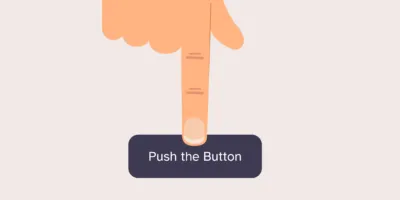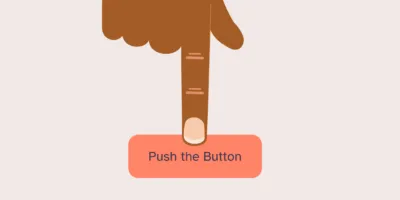10 Aug 2023
What about the ‘human’ in ‘human resources’?

The experience that your employees are having whilst working for your company is highly influenced by the technology they are required to use. In this blog we look at the impact of poor technology on employees and ways to improve that experience to make happy employees, and ultimately happy customers.
-
Hannah Whiteley
Principal UX Consultant
Hannah Whiteley
I love technology. I think it has the power to immeasurably improve our lives, bring us closer together and give us access to whole new worlds at the touch of a button. However technology used poorly, inappropriately or maliciously can cause harm, at best creating frustration, at worst harming people financially or emotionally.
One area I’ve seen this is in the world of employee experience (EX). EX lags behind CX (customer experience) in terms of investment and whole systems thinking, with disparate teams employing different technologies at different points in the journey. Technology is deployed to solve problems that don’t exist or to reduce costs, and in large organisations every task has a different system.
As with other areas of life, there is a constant drive towards automation and self-service. By asking employees to complete tasks or find information via a system, they can theoretically reduce the number of staff required to deal with queries, and reduce the amount of time taken to complete these tasks.
However, this drive towards self service needs to be carefully executed with real consideration put into the employee experience, otherwise it creates more friction than it reduces.
Consider the difference between using a self-serve checkout and being asked to use a manned checkout. Without training, nobody would be expected to be able to use a manned checkout, but often employees are being asked to use complex internal systems that haven’t been designed to be customer facing, without training or support. A lot of design thinking goes into making a checkout that anybody could use unaided, and the same thought needs to be put into employee self serve systems.
Task exhaustion
There are a huge amount of tasks that employees are asked to complete during their working life. ‘Admin tasks’ can take up to 16 hours per week, so it’s imperative that the friction, or even the task itself, is removed.
The spectrum of tasks mean that some can be streamlined with the use of technology, while others require deeper support, and others could be removed entirely. For example, having a quality system to easily complete expenses will reduce anxiety at having to complete the task, whereas dealing with long-term sickness absence in the team needs more personal support. Consider whether these tasks are really necessary. For example, rather than doing expenses, many companies now adopt a high-trust approach where all employees get a credit card and only need to justify unusual expenditures.
Impact
What is the impact when employees are left to deal with poor systems in their day to day lives? Initially it leads to poor productivity, and tasks not being completed, or being completed poorly. Over time it can lead to disengagement, with users not bothering to complete tasks. This disengagement will spread across their team and to the wider organisation, especially if they are a manager. Ultimately it leads to a higher turnover rate. CIPD estimates the average cost of filling a vacancy, including labour costs, is £6,125. For a manager role, these figures rise to £19,000.
Another profound impact of poor technology is that it may be excluding parts of your organisation. You may have employees who don’t use laptops, or who have poor digital literacy, or English isn’t their first language. Systems and services need to be accessible to all employees, or you risk creating divisions between those who have that support and those who don’t.
Where to start
Make the case
Understanding what the key problems are, and the scale of them, is key to getting buy-in at every level. It also gives you a benchmark from which to assess change. When we worked with a large FTSE100 company, we gathered quantitative data via a survey of the employees, alongside systems data (usage statistics, funnel dropout) and previous survey data (e.g. Great Place to Work). We listed out the ‘top tasks’ that employees are required to complete day-to-day and asked employees to assess how often they completed them and how easy they were to complete. Combining those two metrics allows you to see the tasks that should be focussed on first.
We also benchmarked overall satisfaction with the systems and services (the outcome of which was a low 23%). As you make progress you can assess whether the changes you make improve that level of satisfaction. Using big numbers to demonstrate the scale of the problem should help to make the case for investment and progress in improving the experience.
Future shaping
Once you have an idea of the scale of the problem, and some areas for focus, it’s worth bringing together all the teams that can have an impact on that problem to create an ambitious long term goal. For example, satisfaction on all systems will be at least 90% within 3 years, or we will be in the top 10 employers within 5 years. Employee experience is often managed by multiple teams (HR, IT, Internal Comms), so all those teams have to agree and take ownership of the goal. If you can, form a working group made up of the different functions, who are empowered to make change.
Once the teams have defined a goal, you can then spend some time working out how to get there. Impact mapping is a good tool we have used, which allows you to work backwards from the impact you want to have and define all the steps you might need to take to get there.
Experience creating
Now you have a goal, and the steps to get there, you can start shaping the experience. You should have some idea where the biggest impact area might be, from the initial research, so start there. Within your working groups brainstorm and prioritise solutions, thinking about what would have the biggest impact on employees, and what would be quick or easy to implement. Look at how you could prototype and test ideas. If you have a great idea, what’s the bare minimum you could do to see if it has potential? Test ideas out on a variety of employees across the organisation, including those with accessibility requirements, to make sure it is inclusive.
System changing
Once you’ve been able to test the value of a few smaller ideas, you may be able to get buy-in to make wholesale changes. Look at systems holistically, and consider what user need they are trying to solve. Does that need still exist? Is there a much bigger user need that is being excluded by these systems? If you were to start from scratch what would those systems and services look like? By understanding what the real needs are we can start to create services that are sustainable, accessible and easy to use.
TL;DR
The experience that your employees are having whilst working for your company is highly influenced by the technology they are required to use. That technology is often old, difficult to access and hard to use. Poor technology will have the long term impact of excluding, disengaging and disenfranchising employees. Understanding the scale of the problem, bringing teams together, creating long term goals and looking holistically at the service will allow you to start to improve the lives of your employees, and as we know happy employees = happy customers = happy business.

Get in touch with us if you’d like to know more about how we can help improve your business’s employee experience.
Learn more about What about the ‘human’ in ‘human resources’?

Reach out to Hannah Whiteley
Principal UX Consultant




